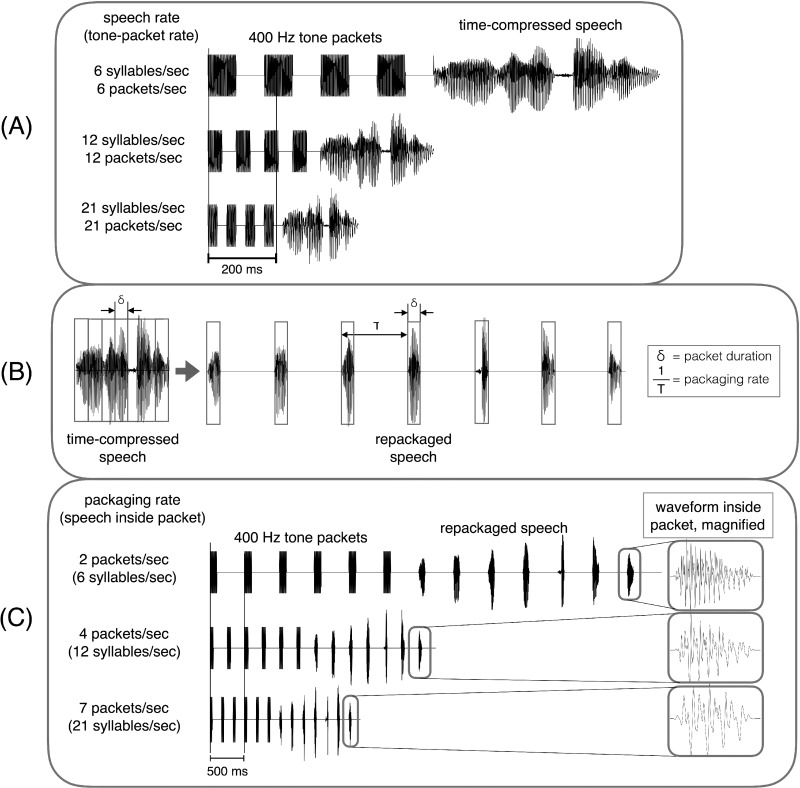FIG. 1.
Compression and repackaging process. (a) Example waveform of a 4-item stimulus list time-compressed to produce syllable rates of 6, 12, and 21 syllables per second. The speech waveform is shown preceded by a sequence of four 400 Hz tone-packets, delivered at the corresponding rate with a 50% duty cycle. (b) Illustration of the repackaging process. The left side shows the time-compressed waveform, blindly segmented into packets with equal duration of δ (gray boxes). The right side shows the time-compressed waveform after repackaging, with a packaging rate of 1/T packets per second. The acoustic signal inside a δ-long packet is the time-compressed signal. (c) Repackaged condition for the digit string shown in (a) at packaging rates of 2, 4, and 7 packets per second, with the speech speed inside a packet being 6, 12, and 21 syllables per second, respectively, and a duty cycle of 20% across the six packaging rates. The speech waveform is shown preceded by a sequence of 400 Hz tone-packets, delivered at the corresponding packaging rate.

